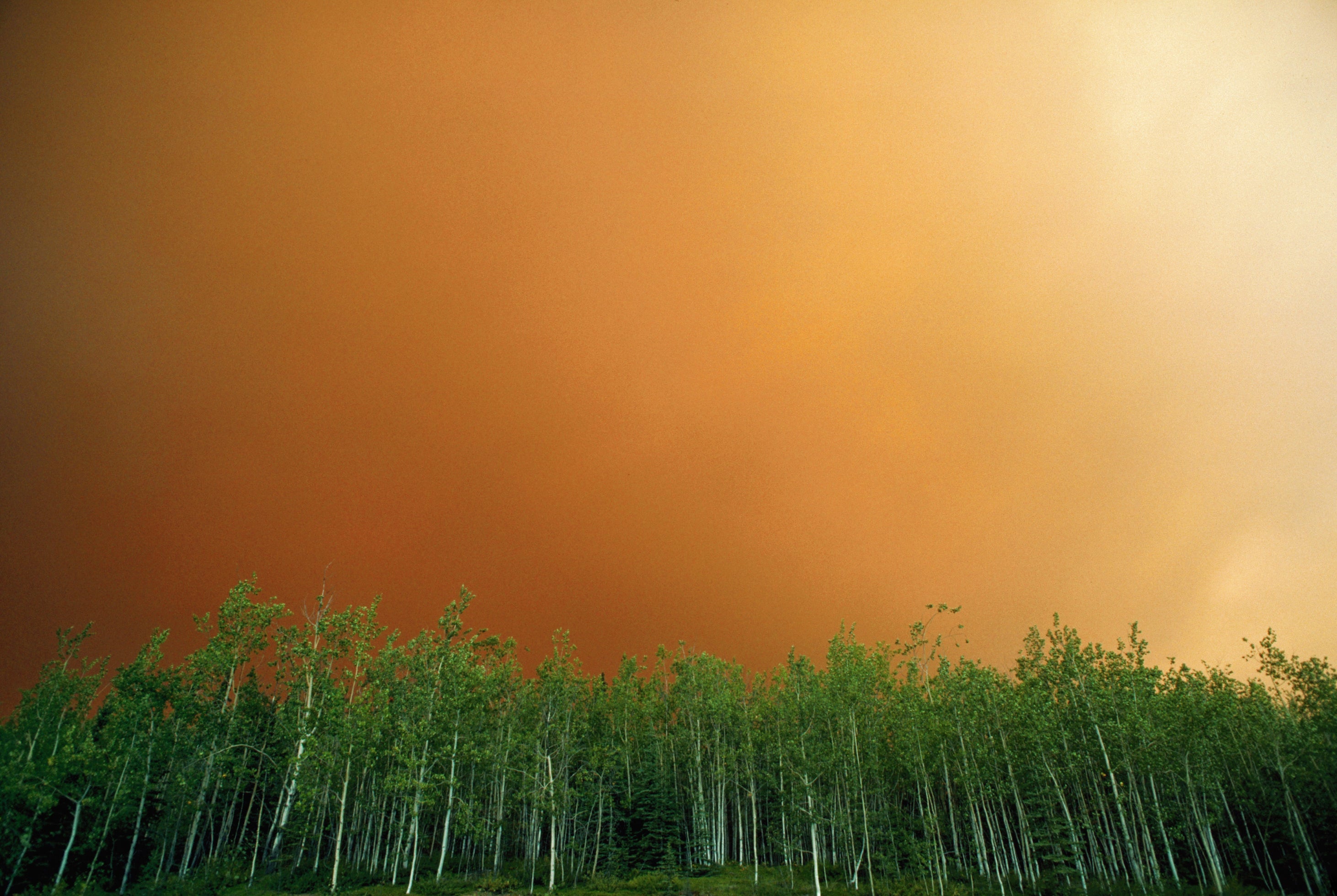
In the carbon-rich boreal forests that extend across the globe just below the Arctic Circle, a vicious climate-wildfire cycle is playing out, one that poses both an accelerating climate threat and an unrealized opportunity to stanch a large and growing source of greenhouse gas emissions.
Consider Alaska. This summer, wildfires spread across the state’s forests at a historic—and terrible—pace. From June through August, wildfires scorched more than 3.1 million acres across the state, an area larger than Yellowstone and Yosemite National Parks combined. That’s nearly half of the nearly 5.7 million acres burned across the U.S. this year to date, according to the National Interagency Fire Center. As they burned, Alaskan wildfires sent more than 150 million metric tons of carbon dioxide into the atmosphere, the carbon pollution equivalent of driving 32 million gas-powered cars for a year.
Boreal forests are massive carbon stores. They hold, mainly in their soils, about two thirds of all the carbon stored by the world’s forests. While wildfires occur naturally in these forests, we and other climate researchers have been observing how climate change is driving dramatic increases in fire frequency and severity.
The burned area in Alaska’s and Canada’s spruce-dominated forests has doubled since the 1960s. Temperatures in these high-latitude regions are rising nearly four times faster than the global average, a trend that is lengthening growing seasons, reducing snowpack and—in hot, dry springs and early summers like Alaska experienced this year—parching trees and soils. Lightning strikes—the main source of wildfire ignitions in these forests—are also becoming more frequent as the climate warms.
Left unchecked, boreal wildfires will further intensify, combusting and releasing to the atmosphere far larger quantities of the ancient organic carbon stores held deep within these forests’ soils. Because boreal wildfires today are often left unchecked, this is the troubling trajectory we are on. But it does not need to be. Our research, recently published in the journal Science Advances, suggests that keeping Alaskan wildfires at the levels these forests experienced, and to which they were adapted prior to the escalating warming of the past few decades, may be an important, overlooked and remarkably cost-effective way to mitigate climate change.
Despite accounting for about 18 percent of U.S. land area and half of average annual U.S. fire emissions of carbon dioxide, Alaska currently receives less than 4 percent of the roughly $3 billion per year in federal funding for fire suppression. Both state and federal fire-fighting resources for Alaska—on average, totaling about $130 million per year—are, understandably, allocated to fight fires that pose direct threats to human lives and property. Wildfires in remote areas of Alaskan forest wilderness are typically allowed to burn.
How could fire management policies and budgets be designed to keep boreal wildfires and their emissions at historical levels? Attempting to extinguish large remote wildfires under hot, dry and windy conditions would be a heroic, costly and foolish enterprise. But with dedicated resources, it may be possible to put these fires out before they get big, by targeting remote small fires from the air once they are first detected by aircraft or satellites. The goal would simply be to keep fires small, limiting emissions while retaining the important ecological benefits that wildfires provide. Such a focus on initial attack may be particularly effective in limiting fire size as peaks in just-ignited fires tend to precede peaks in burned area by several weeks or more.
Our research finds that keeping Alaskan wildfires at pre–climate change levels would require an average annual investment of about $700 million through 2030, five times the current annual investment in Alaskan fire management. Funding would support additional personnel and more airplanes, drones and other technical resources to monitor and put out these fires while they are still small. That is a sizable budget increase, for sure. But consider this: expanded fire management in Alaska to prevent escalating wildfires would cost less than $13 to avert emissions of one ton of carbon dioxide. This is on par with the cost of clean-energy solutions such as replacing electricity generated by fossil fuels with onshore wind or utility-scale solar photovoltaics.
We conservatively estimate that keeping Alaskan wildfires at historical levels would avoid the release of up to 950 million metric tons of carbon dioxide through 2030. Targeting fire suppression in especially carbon-rich and high-wildfire risk areas such as peatlands could reduce emissions further. So too could partnering and sharing expertise with Canada and, ultimately, Russia to extend fire management aimed at limiting carbon emissions across boreal regions.
Limiting boreal wildfires would have multiple additional benefits, including to public health. Wildfire smoke can travel hundreds of miles, putting Alaskans both near and far at significant risk of serious respiratory illness and disrupting the traditional lifeways of Alaskan Native communities. In early July, Nome was smothered by dense smoke from wildfires 430 miles away, causing ozone and particulate pollution to rise well above hazardous levels. In some years, smoke from Alaskan wildfires has even reached the eastern U.S., markedly reducing air quality.
We cannot stop global warming without dramatically reducing and ultimately eliminating fossil fuel emissions. But we also must keep boreal wildfire emissions in check. We ignore these wildfires and their accelerating climate impacts at our peril. Expanded fire management for climate mitigation in Alaskan boreal forests needs to be part of a portfolio of U.S. actions to limit climate change. Now is the time to advance fire management as an essential and cost-effective strategy to keep the vast stores of boreal forest carbon in the ground.
This is an opinion and analysis article, and the views expressed by the author or authors are not necessarily those of Scientific American.
